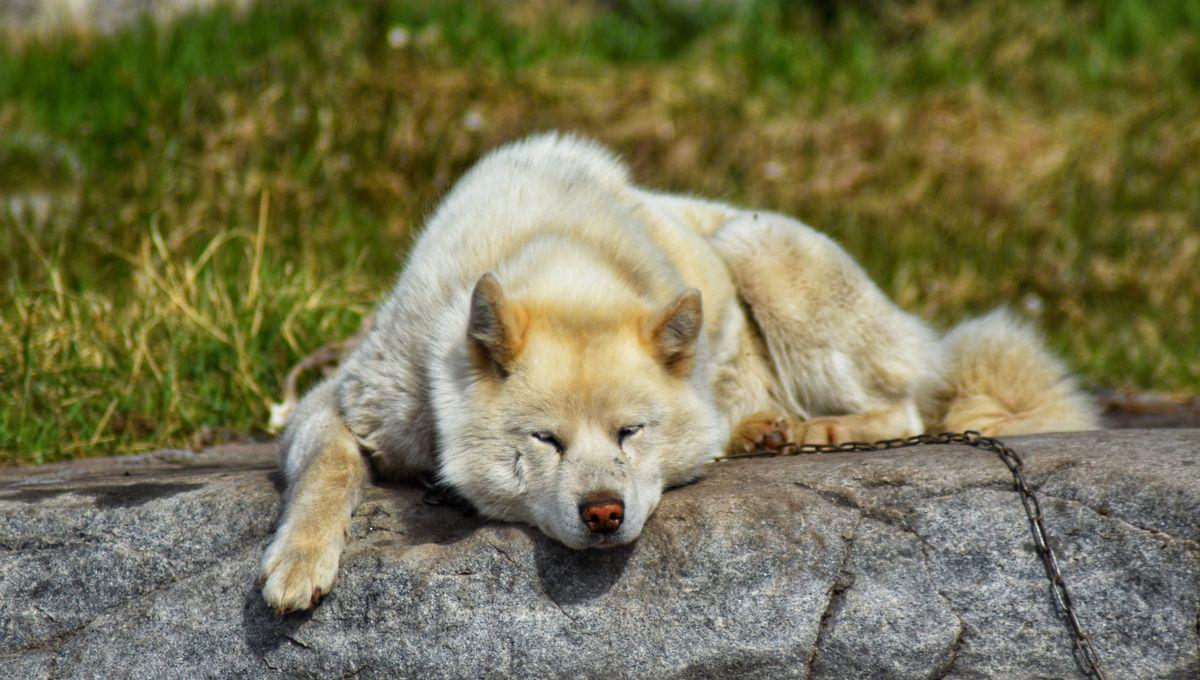Sled dogs have been performing a vital role for people living in the Arctic for 9,500 years. In fact, the ubiquity of these dogs across the polar region is a testament to their significance. While there are various breeds of sled dog today, one breed is not only the oldest among them, it may well be the oldest dog breed altogether. But climate change and other modern threats are impacting its future.
The Greenland sled dog, known as the Qimmeq (Qimmit plural) in Greenlandic, has been working with Inuit people in the country for around 1,000 years. They are still active today, but their numbers are declining quickly. This is due to the loss of snow and ice in the regions, as well as the increased dependence on modern snowmobiles, which have seen their numbers plummet from around 25,000 dogs in 2002, to only 13,000 in 2020. This rapid drop in numbers has been a clear signal to scientists who are worried about the dogs’ future, resulting in an urgent need to document their remaining genetic diversity to inform conservation efforts. This led Tatiana Feuerborn, a postdoctoral research fellow at the US National Institutes of Health in Bethesda, Maryland, and colleagues to collect the DNA samples from both living dogs and the remains of ancient ones found at archaeological sites across Greenland. They managed to sequence the genomes of 92 dogs, spanning around 800 years of history. The team then compared these samples with data for over 1,900 published dog genomes. The team discovered that these dogs form a distinct clade with other ancient Arctic dogs, especially a 3,700-year-old Alaskan dog. This remarkable finding not only demonstrates a genetic continuity for the dogs, it also reinforces a theory related to human cultural history: that there was a rapid migration of Inuit people from northern Canada to Greenland. But this data suggests the migration took place around 200 years earlier than 12th century CE, as is commonly thought. This adds to the argument that Inuit populations arrived in Greenland before Norse travelers. The Norse settlement on Greenland lasted until the 15th century CE, which then ushered in a period of separation between the island inhabitants and Europeans. However, Danish-Norwegian colonists established a trading station at Kitaa during the early 18th century. This led to more interactions between Europeans and the Inuit. But despite this, the results of this latest study show that there was very little genetic mixing between the Qimmit and European dogs. Instead, these dogs fall into four genetic groups that can be matched to geographic dispersion of humans across the island. “To date, the study of dogs using ancient DNA has focused on broad time frames and geographical scales. The results of this study present the foundation for future work using time-series genomes from regional populations to study the local evolution of animals shaped by humans and environments,” the team explain in their paper. “These insights into the Qimmit provide a baseline for levels of inbreeding and introgression that can serve as a foundation for informed management aimed at the preservation of these remarkable dogs.” The study is published in Science.





